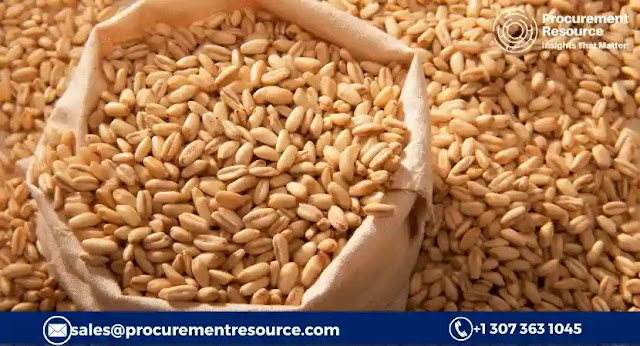During the first two quarters of 2023, the black pepper oleoresin market in Asia, particularly in India, showed an upward trend, closely tied to the price dynamics of the black pepper market. Indian pepper, known for its quality, witnessed increasing demands from global markets, leading to steady and high prices. However, production was limited due to unseasonal weather changes, further contributing to the rise in prices. As a major spice exporter, India's pepper commanded higher prices compared to other varieties. The Brazilian, Vietnamese, and Indonesian markets followed distinct export price trends during this period.
Request for Real-Time Black Pepper Oleoresin prices: https://www.procurementresource.com/resource-center/black-pepper-oleoresin-price-trends/pricerequest
Definition
Black pepper oleoresin is a concentrated extract derived from black pepper (Piper nigrum) berries. It is obtained through solvent extraction or steam distillation methods. This oleoresin contains the essential oil and other active compounds of black pepper, including piperine, which gives it the characteristic pungent flavor and aroma. Black pepper oleoresin is widely used in the food industry as a flavoring agent, and it also finds applications in pharmaceuticals, cosmetics, and other industries due to its bioactive properties and intense taste profile.
Key Details About the Black Pepper Oleoresin Price Trend:
Procurement Resource does an in-depth analysis of the price trend to bring forth the monthly, quarterly, half-yearly, and yearly information on the Black Pepper Oleoresin in its latest pricing dashboard. The detailed assessment deeply explores the facts about the product, price change over the weeks, months, and years, key players, industrial uses, and drivers propelling the market and price trends.
Each price record is linked to an easy-to-use graphing device dated back to 2014, which offers a series of functionalities; customization of price currencies and units and downloading of price information as Excel files that can be used offline.
The Black Pepper Oleoresin Price chart, including India Black Pepper Oleoresin price, USA Black Pepper Oleoresin price, pricing database, and analysis can prove valuable for procurement managers, directors, and decision-makers to build up their strongly backed-up strategic insights to attain progress and profitability in the business.
Industrial Uses Impacting the Black Pepper Oleoresin Price Trend:
 Black pepper oleoresin serves as a valuable ingredient in various industries. In the food industry, it is utilized as a flavoring agent in sauces, seasonings, and processed foods due to its intense taste and aroma. In pharmaceuticals, black pepper oleoresin's bioactive compound, piperine, plays a role in enhancing drug absorption and efficacy. It also finds applications in cosmetics, perfumes, and personal care products for its aromatic properties. Additionally, it is used in insect repellents and as a natural food preservative.
Black pepper oleoresin serves as a valuable ingredient in various industries. In the food industry, it is utilized as a flavoring agent in sauces, seasonings, and processed foods due to its intense taste and aroma. In pharmaceuticals, black pepper oleoresin's bioactive compound, piperine, plays a role in enhancing drug absorption and efficacy. It also finds applications in cosmetics, perfumes, and personal care products for its aromatic properties. Additionally, it is used in insect repellents and as a natural food preservative.
Key Players:
- Synthite Industries Ltd
- Akay Group Ltd
- Plant Lipids
- Universal Oleoresins
- BOS Natural Flavours (P) Limited
About Us:
Procurement Resource offers in-depth research on product pricing and market insights for more than 500 chemicals, commodities, and utilities updated daily, weekly, monthly, and annually. It is a cost-effective, one-stop solution for all your market research requirements, irrespective of which part of the value chain you represent.
We have a team of highly experienced analysts who perform comprehensive research to deliver our clients the newest and most up-to-date market reports, cost models, price analysis, benchmarking, and category insights, which help in streamlining the procurement process for our clientele. Our team tracks the prices and production costs of a wide variety of goods and commodities, hence providing you with the latest and consistent data.
To get real-time facts and insights to help our customers, we work with a varied range of procurement teams across industries. At Procurement Resource, we support our clients, with up-to-date and pioneering practices in the industry, to understand procurement methods, supply chain, and industry trends, so that they can build strategies to achieve maximum growth.
Contact Us:
Company Name: Procurement Resource
Contact Person: Jolie Alexa
Email: sales@procurementresource.com
Toll-Free Number: USA & Canada – Phone no: +1 307 363 1045 | UK – Phone no: +44 7537 132103 | Asia-Pacific (APAC) – Phone no: +91 1203185500
Address: 30 North Gould Street, Sheridan, WY 82801, USA














